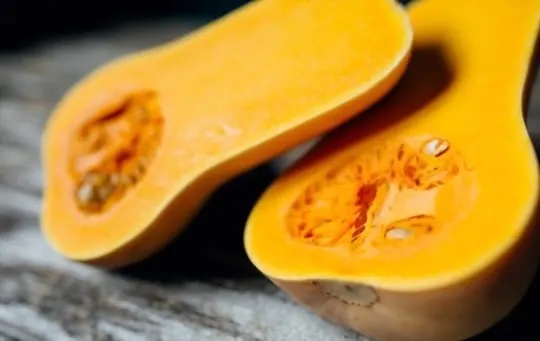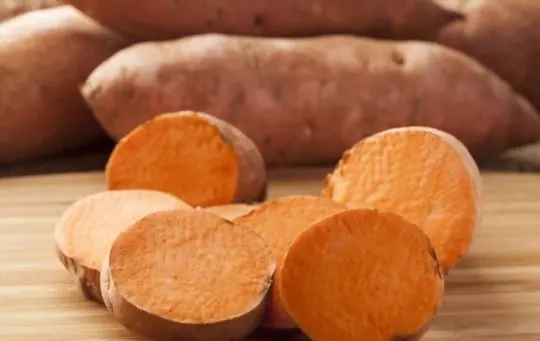Craving that buttery texture of delicata squash and can’t find it?
You’re not alone. Turns out, there’s more than one way to skin a cat—or in this case, substitute a squash.
We’ve all been there. Planning the perfect menu only to realize one key ingredient is missing.
Good news is, we’ve got you covered. This isn’t about settling for less.
It’s about discovering new favorites that keep your dishes on point.
Read on to unlock the five best swaps for delicata squash.
The 5 Best Substitutes for Delicata Squash
Delicata squash is a winter squash variety known for its sweet flavor and tender, edible skin.
If you’re unable to find delicata squash or want to explore alternative options, there are several substitutes available.
In this guide, we will compare the top 5 substitutes for delicata squash, discussing their key characteristics and suggesting proper ratios to help you achieve similar flavors and textures in your recipes.
| Substitute | Key Characteristics | Proper Ratio |
|---|---|---|
| Acorn Squash | Sweet and nutty winter squash with a slightly drier texture; can be baked, roasted, or stuffed | Use an equal amount of acorn squash as a substitute for delicata squash |
| Butternut Squash | Sweet and nutty winter squash with a smooth texture; versatile and widely available | Use an equal amount of butternut squash as a substitute for delicata squash |
| Spaghetti Squash | Mild-tasting yellow winter squash that forms spaghetti-like strands when cooked | Use an equal amount of spaghetti squash as a substitute for delicata squash |
| Sweet Potatoes | Sweet and starchy root vegetable with a creamy texture; various cooking methods available | Use an equal amount of sweet potatoes as a substitute for delicata squash |
| Kabocha Squash | Japanese winter squash with sweet and starchy flesh; tender and versatile | Use an equal amount of kabocha squash as a substitute for delicata squash |
Now let’s delve into each substitute in more detail:
1 – Acorn Squash

One of the most popular substitutes for delicata squash is acorn squash.
This fruit has hard skin that can be difficult to cut through.
However, the orange flesh is sweet and very tasty.
The acorn squash is a good source of dietary fiber, vitamins A and C, and potassium.
This fruit is native to North America and can be found in the fall.
It’s also one of the most popular winter squashes.
The acorn squash is available in different colors, including green, white, and orange.
When cooked, the acorn squash is moist and slightly sweet.
Depending on the size of the squash, it will take about 45-60 minutes to cook.
When choosing an acorn squash, look for one that’s heavy for its size, which means that it’s full of seeds and pulp.
The acorn squash can be baked, steamed, or roasted. It can also be used in soups and stews.
- Key Characteristics: Acorn squash is a sweet and nutty winter squash with a slightly drier texture than delicata squash. It can be baked, roasted, or stuffed, making it a versatile substitute.
- Proper Ratio: Use an equal amount of acorn squash as a substitute for delicata squash. Adjust the cooking time based on the size and desired tenderness.
2 – Butternut Squash

Butternut squash is another popular substitute for delicata squash.
It’s larger than the delicata squash and has a hard rind.
The flesh is a creamy color and has a sweet flavor that makes it great for baking and roasting.
The butternut squash is high in fiber, folate, potassium, vitamin C, and manganese.
Like the acorn squash, it’s native to North America and available in the fall.
Butternut squash can be roasted with salt, pepper, olive oil, herbs or chopped up into soups or stews.
It can also be baked with other vegetables to make an easy side dish.
Since this fruit is so large, it will take about an hour to cook in the oven or 45 minutes to steam on the stovetop.
- Key Characteristics: Butternut squash is a sweet and nutty winter squash with a smooth texture. It is widely available and can be used in various recipes as a substitute for delicata squash.
- Proper Ratio: Use an equal amount of butternut squash as a substitute for delicata squash. Adjust the cooking time based on the size and desired tenderness.
3 – Spaghetti Squash

If you’re looking for a squash that’s unique and fun to eat, then you might want to try the spaghetti squash.
This squash has a light yellow color shaped like a large curved tube.
The flesh is soft and can be scraped out with a fork or spoon, making it easy to prepare.
The flavor of the cooked spaghetti squash resembles pasta, and it can be used in place of pasta in recipes.
Spaghetti squash is high in fiber, vitamin A, vitamin C, potassium, folate, manganese, magnesium, and phosphorus.
It’s also low in calories and fat (only 30 calories per cup).
The spaghetti squash can be baked whole or halved with some butter or olive oil sprinkled on top.
It will take about an hour to cook on the stovetop or 30-45 minutes in the oven at 350 degrees F.
It’s important to pierce the squash several times with a fork before cooking to prevent it from bursting open.
- Key Characteristics: Spaghetti squash is a mild-tasting yellow winter squash that forms spaghetti-like strands when cooked. While the texture differs from delicata squash, it offers a unique substitute option.
- Proper Ratio: Use an equal amount of spaghetti squash as a substitute for delicata squash. Cook and separate the strands to use in your desired recipe.
4 – Sweet Potatoes

When you’re looking for a hearty, filling, and nutritious food, then you might want to consider the sweet potato.
This tasty orange vegetable is related to the morning glory plant.
In terms of nutrition, sweet potatoes are high in vitamin A, vitamin C, and manganese.
They’re also a good source of fiber, potassium, copper, and pantothenic acid (vitamin B5).
Sweet potatoes can be prepared in many different ways.
One of the most popular ways is to roast them in the oven at 400 degrees F for about an hour.
This will bring out their natural sweetness and make them very tender.
You can also boil them in water until they are soft and then mash the cooked flesh with butter or margarine and salt.
Sweet potatoes can be boiled or baked along with other vegetables such as onions, peppers, and carrots to provide a complete meal high in nutrients.
- Key Characteristics: Sweet potatoes are sweet and starchy root vegetables with a creamy texture. Although they have a distinct taste, they can provide a delicious substitute for delicata squash in various dishes.
- Proper Ratio: Use an equal amount of sweet potatoes as a substitute for delicata squash. Adjust the cooking method based on your recipe requirements.
5 – Kabocha Squash

Last but not least, the kabocha squash is a popular winter squash often used in Asian cooking.
It has a hard rind with deep green skin, and its flesh is yellowish to orange in color.
When it comes to flavor, kabocha squash is similar to pumpkin pie.
It has a sweet and nutty flavor that tastes delicious.
This vegetable is very high in vitamin C and beta-carotene, which converts to vitamin A in the body.
It’s also a good source of fiber, copper, potassium, and manganese.
If you want to substitute this for delicata squash, you can peel and cut it into 1/2 inch slices.
Then, you can roast the slices in an oven preheated to 350 degrees F for about 15 minutes or until they are tender.
You can also boil them in water until they are soft and then mash the cooked flesh with butter or margarine and salt.
- Key Characteristics: Kabocha squash is a Japanese winter squash with sweet and starchy flesh. It offers a similar texture and taste to delicata squash, making it an excellent substitute.
- Proper Ratio: Use an equal amount of kabocha squash as a substitute for delicata squash. Adjust the cooking time based on the size and desired tenderness.

Leave a comment